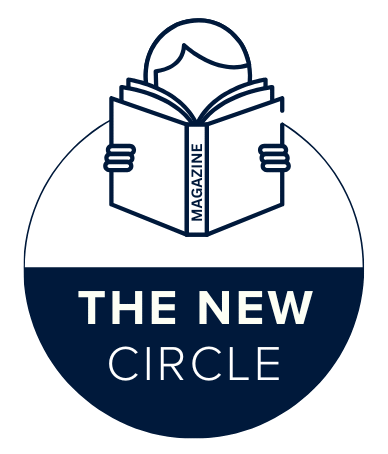Introduction
International brands are successful because they literally speak the language of their customers. However, many cross-border marketing strategies fall short because they fail to account for a key element: cultural adaptation. It is essential to convey meaning, emotion, and intent in ways that are relatable locally; simply translating words is insufficient. Marketing localization comes into play here. By bridging linguistic and cultural divides, it enables brands to establish genuine connections with consumers around the globe. In any market, companies can ensure their communications build trust, encourage interaction, and ultimately increase sales with the aid of professional translation services. As shown in recent industry research by Slator, localization is now a strategic imperative for any brand expanding globally.
What Is Marketing Localization?
The process of making material feel linguistically, culturally, and emotionally natural to a particular target is known as marketing localization. It goes beyond simple translation by taking into account people’s thoughts, values, and reactions to various pictures or tones. It involves adapting colors or symbols, changing idioms or humor, and rethinking slogans to suit the local way of life. A campaign developed in one nation might elicit the same emotions in another without coming off as “foreign” if localization is done successfully. It’s the art of making international communication feel local, in a nutshell.
Why Professional Translation Services Matter
Marketing localization is the process of making content feel emotionally, linguistically, and culturally natural to a specific target audience. By considering people’s ideas, attitudes, and responses to different images or tones, it goes beyond basic translation. To fit the local way of life, it entails modifying colors, symbols, idioms, and humor, as well as slogans. If localization is done well, a campaign created in one country may evoke the same feelings in another without being “foreign”. In a nutshell, it’s the skill of making global communication feel local.
AI vs Human Translation in Marketing
The argument between AI vs human translation continues. AI brings undeniable advantages in speed and cost-efficiency, making it a helpful tool for handling large volumes of text or preliminary drafts. However, in marketing, emotion and nuance often decide whether a plan succeeds or fails. AI may handle data fast, but it struggles with irony, idioms, or cultural sensitivities. Human translators, on the other hand, excel at empathy, creativity, and understanding the unspoken layers of communication. For brand messaging that relies on tone, rhythm, and cultural finesse, human expertise remains irreplaceable. As Harvard Business Review points out, AI is transforming translation—but for marketing, depending solely on it can risk damaging your brand’s voice.
Hybrid Translation Solutions: Smart Balance for Marketers
Hybrid translation solutions, which cleverly combine AI and human experience, are proving efficient for modern marketers. The concept usually entails machine translation producing preliminary versions, which qualified professionals then edit to guarantee accuracy and emotional resonance. This method combines the precision and refinement of human linguists with the speed and scalability of AI to provide the best of both worlds. Global marketing teams that need to localize a lot of material without compromising quality will find it especially useful. A consistent message across platforms and campaigns is another benefit of hybrid translation solutions. Keeping people informed guarantees that technology fosters creativity rather than supplants it, as Lilt argues.
Fast Human Translation: Keeping Up with Campaigns
Marketing is fast-paced; there is no time for delays during product launches, flash discounts, or seasonal campaigns. This is where having fast human translation services may really help. These teams use agile workflows and linguistic expertise to provide precise, locally relevant material on short notice. Speed doesn’t have to mean sacrificing quality, whether it’s for urgent landing page changes, multilingual social media postings, or same-day translation for ad content. To keep teams in sync across markets and ensure messages go live simultaneously everywhere, real-time coordination and intelligent translation technologies are essential. Professional translators with quick response times are becoming crucial partners for digital-first marketing teams.
Business Translation Solutions for Global Brands
Business translation solutions provide consistent communication at every customer touchpoint for multinational brands. The objective is to preserve a consistent brand identity across languages, from product descriptions and online advertisements to customer communications and social media captions. Marketing teams can handle multilingual content more effectively thanks to these technologies, which streamline procedures. Maintaining consistency across all communication channels improves client loyalty and trust, as well as brand recognition. According to CSA Research, businesses that invest in top-notch translation services experience measurable increases in client engagement and global expansion.
Translation API Integration: Scaling Content Delivery
It’s now essential, not optional, to incorporate translation into your digital ecosystem. Brands may seamlessly link their marketing automation tools, e-commerce platforms, and content management systems to translation workflows by integrating translation APIs. This seamless connection ensures content is always up to date across all languages, expedites localization, and eliminates manual processes. APIs improve the efficiency and scalability of global content management for marketing teams managing numerous markets and regular updates. Such interfaces help streamline translation delivery and preserve consistent brand language across all media, according to the DeepL API documentation.
The Case for Localized Marketing ROI
Investing in localization is both a revenue strategy and a branding decision. Localized content boosts user engagement, conversion rates, and client loyalty, according to studies. Customers stay longer and make larger purchases when they feel heard. Companies like Nike, McDonald’s, and Coca-Cola have demonstrated this by modifying their messaging to fit local customs, transforming international advertising into regional experiences. The return on investment (ROI) of localization is evident: commercial success is driven by emotional relevance. Businesses that use a professional translation service online experience stronger global growth, easier market access, and improved campaign performance. Language is the link that transforms attention into action, according to Shopify.
Conclusion
Speaking your customers’ language in every way is the goal of marketing localization, which goes beyond simple translation. Global brands can attain quality and scalability by integrating APIs, hybrid models, and professional translation services. In the current competitive environment, localization is a long-term growth strategy rather than an optional extra. Your brand connection will grow stronger the more your messaging aligns with your target audience’s culture. Businesses that make localization investments now will be the ones influencing global success in the future.
READ ALSO: Looking for Amazon FBA Services? – SpectrumBPO Can Help You Grow Your Ecommerce Business

